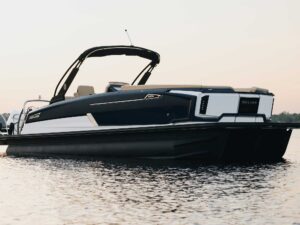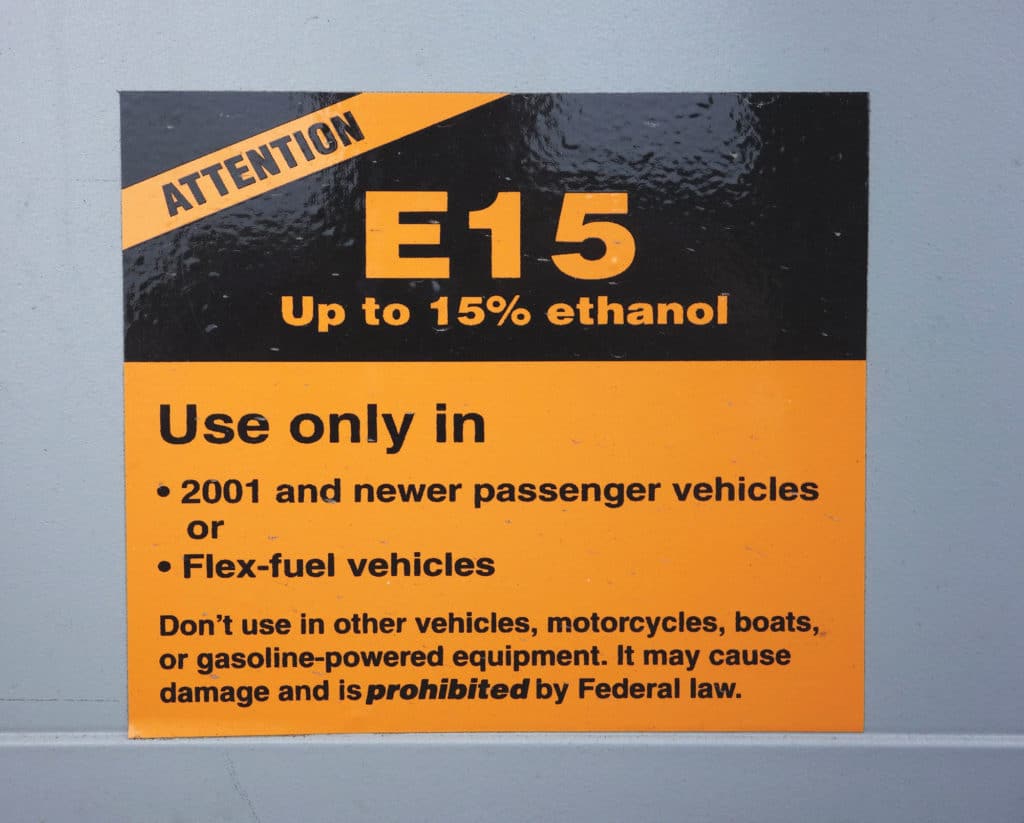
E15, or Unleaded 88, was approved for sale by the federal Environmental Protection Agency in 2012 and is now available in 31 states, but it has not been sold between June 1 through September 15—most of the boating season in much of the country—to reduce evaporative emissions that contribute to ground-level ozone.
As a boater, you certainly should know that E15 is not approved for use in boat engines, and it should only be used in 2001 and newer cars and light trucks. Boat engines have only been designed to use fuel with up to 10 percent ethanol, known as E10. In fact, pumping E15 into a boat, motorcycle or lawn mower is a violation of federal law.
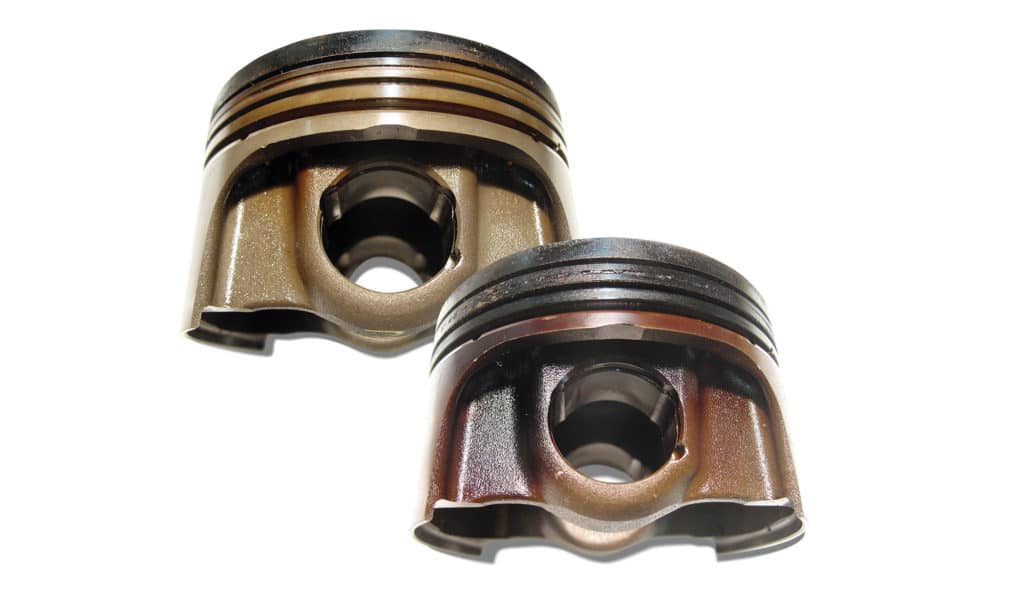
“E15 has not been approved for these types of engines because significant catastrophic engine failures have occurred as a result,” says Jeff Wasil, engineering manager of emissions testing at BRP/Evinrude.
However, in October 2018, President Trump directed the EPA to expand waivers for E15 so it can be sold year-round. This went into effect June 1, 2019. Note, that, according to the Department of Energy, stations are not required to sell E15, but offer it due to equipment grants and better profit margins. Also, E10 remains the limit for passenger vehicles older than model year 2001.Boating has reported the issues E10 fuel has caused boaters since its sale was mandated by the Renewable Fuels Act in 2006, but with E15 now widely available, we wondered what might happen to your boat engine if you tried to run it on E15. Not just your new engine, but your legacy engine—your 1972 Johnson, for example. To find out, we spoke to experts at BRP, Volvo Penta, Mercury and Yamaha, and the answer should warn you off E15.
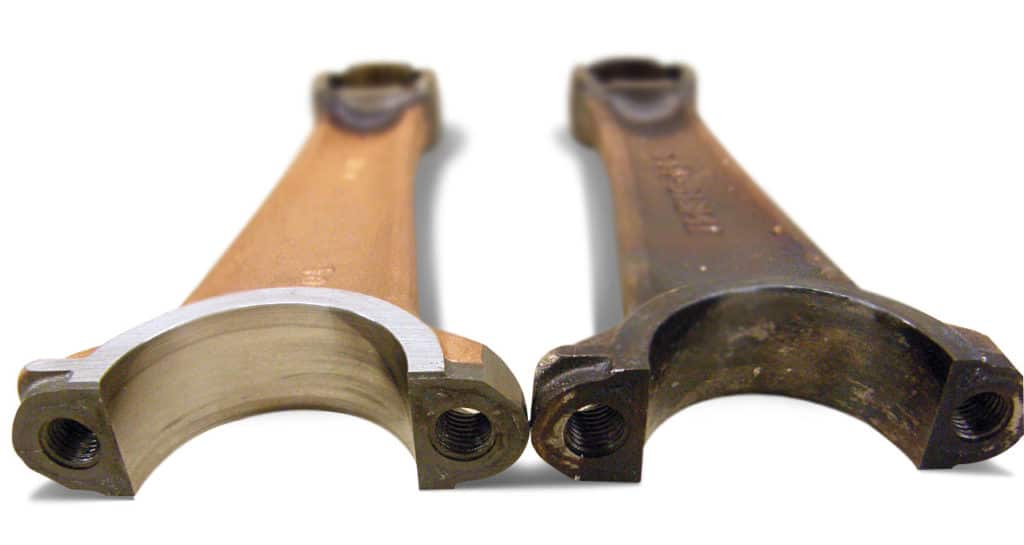
In 2011, Mercury Marine completed E15 testing under contract to the U.S. Department of Energy, using three outboard types: a 300 hp Verado representing fuel-injected four-stroke technology, a 9.9 hp FourStroke representing carbureted four-stroke technology, and a 200 hp EFI two-stroke to represent legacy technology. A pair of engines, one running E15 and the other running E0 (gasoline with no ethanol), were subjected to a 300-hour endurance duty cycle.
On E15, the Verado failed three exhaust valves. On E15, the 9.9 FourStroke developed a misfire and poor run quality at idle, and the fuel-pump gasket showed signs of deterioration. On E15, the 200 EFI outboard failed a connecting rod bearing. All of the outboards tested on E0 fuel completed the test unscathed.
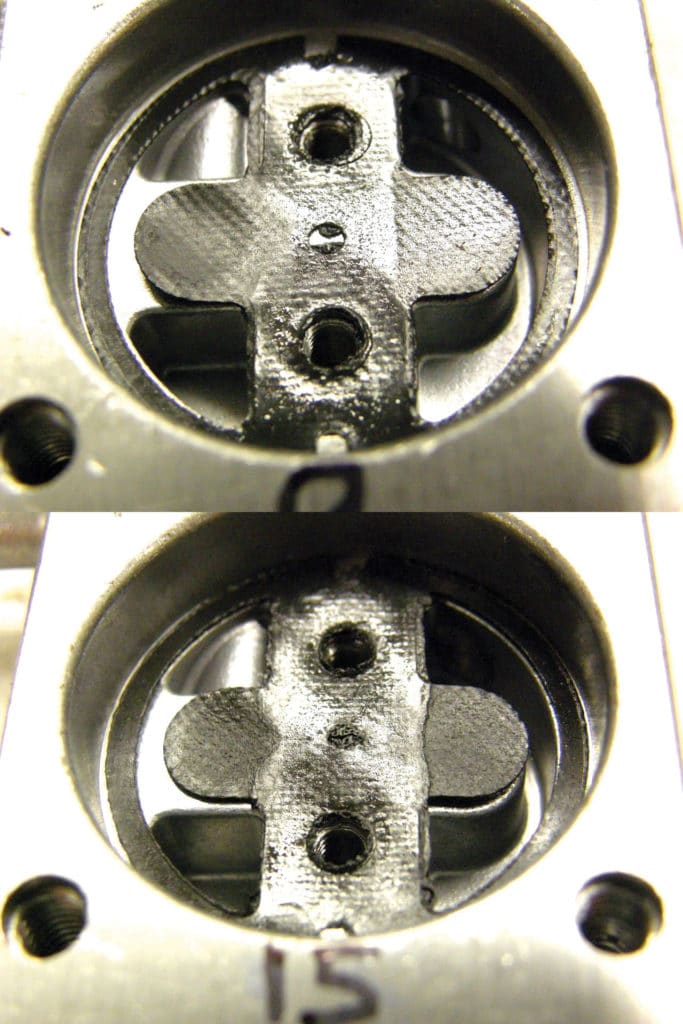
“This was really a narrow test,” says Tim Reid, Mercury’s vice president of product development and engineering. “We would have liked to test other brands and a wider variety of engines, but the government budget for testing was limited. It’s clear the two main issues with E15 are lean operation and materials compatibility.”
Read Next: Check Out Our Comprehensive Ethanol Coverage
Post-test inspection revealed all of the motors tested on E15 showed signs of elevated piston and exhaust temperature because the fuel mixture became excessively lean. E15 contains 5 percent oxygen by weight compared to 3.5 percent oxygen for E10. The additional oxygen content causes “enleanment” of the engine. During enleanment, exhaust gas temperatures rise. Unlike flex-fuel auto engines, a marine engine cannot self-adjust to accommodate fuel with more than 10 percent ethanol.
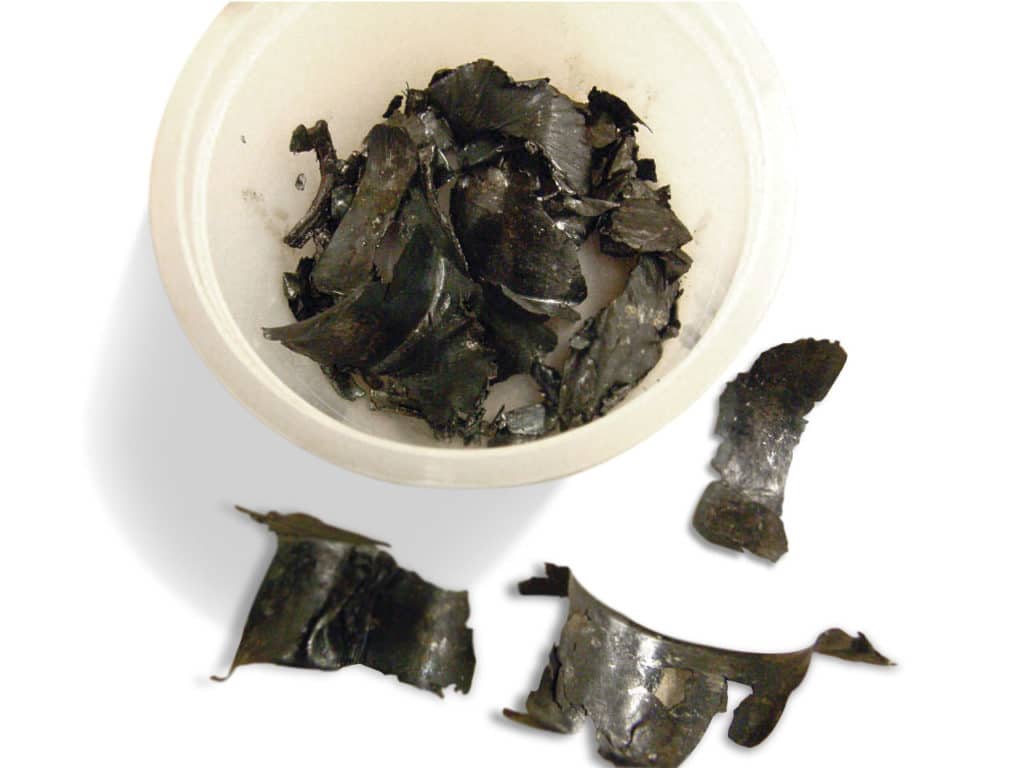
“Enleanment affects already stressed marine engine components such as pistons, exhaust ports, exhaust valves and cylinder heads,” Wasil says. “Since marine engines can run for extended periods of time at wide-open throttle, any increase in exhaust gas temperature will cause issues.”
The issue of materials compatibility is especially concerning for those legacy engines, which can be 40 years old.
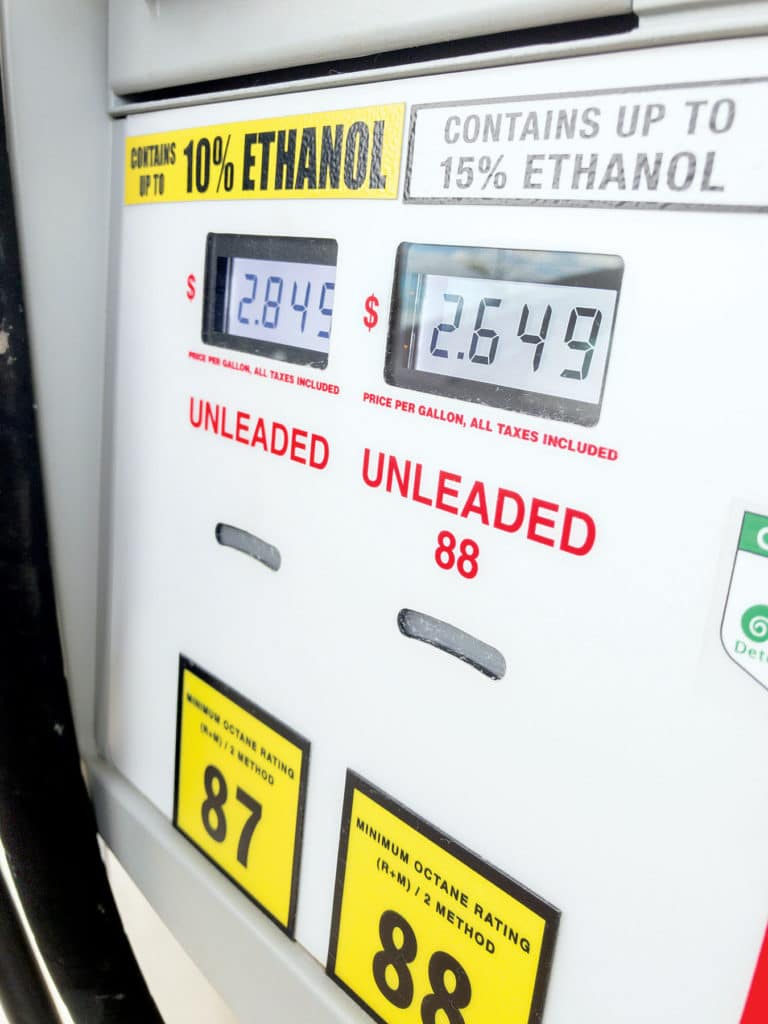
“The concern is what happens to the components when the engine is not used for some period of time,” Wasil says. “This is when the higher ethanol content can start to do its damage to these fuel-system components. Remember, ethanol is a harsh solvent, and more ethanol is an even stronger solvent.”

